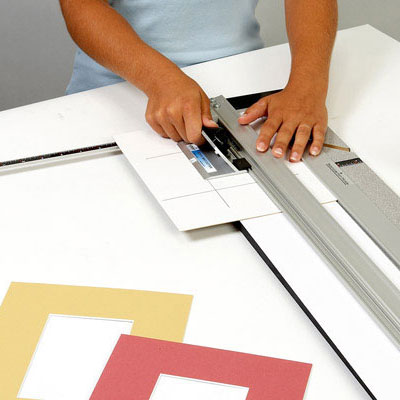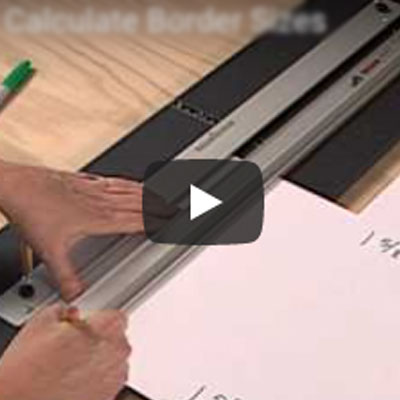CLEANING GLASS
Thoroughly clean the glass before laying it on the matting or artwork. If using window glass, it may be covered with a grainy resin coating that should be brushed off as much as possible before cleaning. Household glass cleaners are acceptable, but avoid ammonia and perfumes that may add unwanted chemicals to the framing package. Commercial glass cleaners are often available at hardware stores, glass shops, and craft stores that have framing departments.
CUTTING GLASS
Glass can be cut to size using a T-square and a hand-held glass cutter. The cutter typically has a rotating wheel at one end that makes a "score line" on the glass, and a ball at the other end for tapping the score to complete the cut. Logan makes a hand-held glass cutter that can be used against a T-square or in conjunction with some mat cutter bases.
1. Clean the glass before cutting for a smoother cut and to extend the life of the glass cutter. Set glass on a clean work surface; any bits of glass or wire on the work surface can scratch the glass.
2. Measure and mark where to cut the glass. Use a Tsquare as a guide for the cutter. Hold the glass cutter so that it rests comfortably in the hand when drawn forward. Position cutter with the wheel straight up and down, not at an angle. Use enough pressure to achieve a good score line. If white bits are being produced, the force is too great. Keep the pressure as even as possible, and run the cutter off the edge of the glass. Do not retrace the cut; it is unnecessary and can ruin the cutter. A few light or skipped spots will not affect the cut.
DON'T WANT TO CUT THE GLASS?
Glass and plastics can be custom cut by many craft, hobby, art supply dealers, frame shops, hardware stores, home improvement stores and glass suppliers.












